Would you like to take your LC-MS/MS analysis from 0 to 3 mL/min without the complexity of changing probes or splitting the LC flow? Then take a look into the Turbo V ion source from SCIEX. Introduced more than 15 years ago, the Turbo V ion source continues to be a...
Tags
Loss the contact closure signal
our 7600 couple with nanoLC Ultimate 3000 via contact closure. it has run without any loss connection during the batch. Just yesterday, the last injection keep equilibrating system until the LC finished the gradient run. We closed the software and power off LC and MS then started again but it did not help. The Dionex engineer also checked their LC and triggerring cable found both are ok.
Echo MS system maintenance operations
The Echo® MS system is a robust platform, and like any other platform, requires some routine maintenance on a regular basis. Here are 3 maintenance steps that can help you ensure consistent, reliable performance: Immediately before use or after switching carrier...

Breaking down the SCIEX Triple Quad™ 7500 LC-MS/MS System – QTRAP® Ready
Sensitivity and robustness carry different meanings in the world of mass spectrometry. Generally, sensitivity refers to an instrument’s ability to achieve lower limits of detection (LOD). Robustness, on the other hand, refers to an instrument’s ability to consistently...

The honey sting
As a consumer it’s hard for me not to feel inundated with claims that our food is “all-natural” or “chemical-free” or that we should buy certain “superfoods” for their health benefits. We read labels and trust that the product we are buying is what we are truly...

Innovation that’s blasting through limitations in explosive detection
Mass spectrometry’s important role in identifying explosives The need for rapid explosive detection is now an unfortunate reality. The remit is multifaceted. The first is for preventative purposes, to protect us from any threat to life. The second is in the...

A new generation of therapeutic modalities
There are over 7,000 genetic diseases that could potentially be cured using gene therapy. Rare metabolic diseases, autoimmune disorders, cardiovascular disease and cancers are some of the top disease classes that can be addressed with gene therapies. With over 1,000...
Enhancing Biologics with CESI-MS Characterization
Comprehensive characterization of a biologic requires analysis at both the intact and digest levels, but these analyses can be complex and cumbersome. For example, with conventional liquid chromatography separations, researchers are often left with limited information...
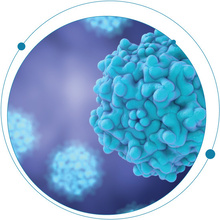
Full, partial and empty capsid ratios for AAV analysis: What’s the big deal?
For many of you working to develop gene therapy drugs, you know that the time to market the drug is critical. Because gene therapeutics cure diseases by targeting specific genes, it is a constant race to see who develops the drug first. Unlike other classes of drugs where multiple medications can be used to treat a disease, whoever is first to develop a gene therapy drug wins.
Accurate mass LC-MS/MS for PFAS analysis without needing a blockbuster budget
If you’ve been following our recent blogs, you’ve probably seen quite a bit on how per- and polyfluoroalkyl substances (PFAS) are shaking up both the food and environmental industry. Even if you’ve not been following our blogs, you’ve probably seen a lot of media...

A rising star in food allergen research: proteomics of shellfish allergen
It’s important to know what you’re eating, especially if you suffer from a food allergy.
About 220 million people worldwide live with a food allergy.1 These numbers, along with the complexity and severity of conditions, continue to rise. In America, there are about 32 million food allergy sufferers—5.6 million of those are children under the age of 18.2.2 That’s 1 out of every 13 children, or about 2 in every classroom. From a financial perspective, the cost of food allergy childcare for US families is up to $25 billion

What is Multi Attribute Methodology (MAM)?
Q&A with Sean McCarthy Global Market Manager, Biologics, SCIEX MAM is an acronym for Multiple Attribute Method. In short, MAM is a method which may be applied for characterization of a biotherapeutic to understand its sequence, identify liabilities, identify...

New Methods for N-Glycan Sequencing Provide Structural Information in as Little as 1 Hour
As interest in N-glycan analysis grows within the biopharma industry, innovation continues allowing analyses to be done in less time with fewer and less tedious, sample preparation steps. One of these recent innovations was the release of the SCIEX Fast Glycan...
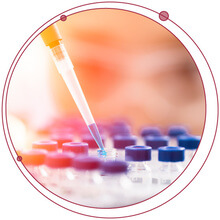
When Chiral Separation Turns Tricky: The Story Behind CESI-MS in Forensic Chiral Analysis
Against a backdrop of rapid growth, chirality plays a major role in the synthesis of drugs in both pharmaceutical and illicit drug development. In fact, more than half of the drugs currently in use are chiral compounds, available as either racemates or pure...
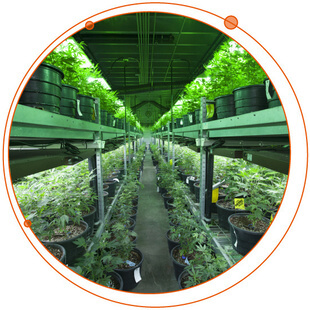
Cannabis is Legal in Canada – How Did We Get Here?
The First in a Three-Part Series Welcome to the first in a series of blogs from the cannabis team at SCIEX, designed to bring you up to speed and put you in the lead of the recently legalized cannabis market in Canada. The Canadian cannabis market has taken the plunge...
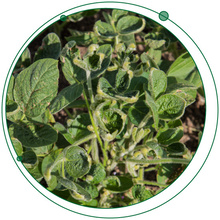
3 Dicamba Analysis Questions You Need to Ask Yourself Today
We blinked and the last two years went in a flash. It seems like just yesterday, the Dicamba herbicide controversy hit the headlines in 2016 and the EPA set the regulations to expire in two years. Fast forward to today. Dicamba is an acid herbicide used to kill...

Don’t Be a Food Scandal Scapegoat. Fight Back with LC-MS/MS for Your Meat Authenticity Testing
The infamous horsemeat scandal of 2013 shined a spotlight on the questionable integrity of our meat supply. What followed was a lengthy investigation as the extent of the scandal unraveled before our eyes, reaching far beyond the European borders...
It’s Time to Turn Things Around―Faster and Accurate Mass Analysis of Organic Explosives
Sadly, the world is a volatile place. The threat of organic explosive use by terrorists and criminals is very much with us, posing a significant danger to people worldwide. The rising concern for public safety is a top priority for national security organizations...
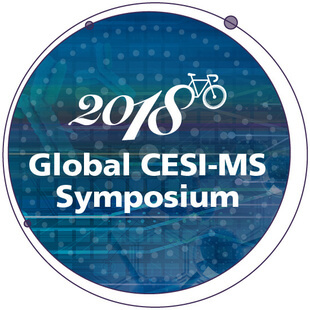
Push Your Research to the Cutting Edge: 2018 Global CESI-MS Symposium
There are a lot of conferences vying for your attention every year. The Global CESI-MS Symposium on October 10-11 in the Netherlands is one you can’t afford to miss. It is the place to hear about the latest advancements made through the adoption of CESI-MS...
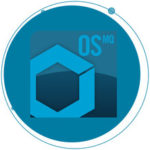
Break the routine: SCIEX OS-MQ improves your quantitation workflows
Advances in today’s technology have resulted in a need for higher and faster sample throughput, with increasing number of measured analytes per sample. The new SCIEX OS-MQ software breaks the routine and takes quantitation workflows to a new level. Key features...

Stop Fumbling Around in the Dark: Try LC-MS/MS for Designer Drugs in Forensic Samples
Imagine being blindfolded, sent into a large (dark) room filled with obstacles and challenged to find an item, but you don’t know what that item is, and you have never seen it before. Then you must do the same again the next day, but you are looking for a different...

Something’s in the Water: Tackle Your PFAS Analysis
Exposure to per- and polyfluoroalkyl substances (PFAS) residues could be dangerous. These chemicals have been linked to a variety of adverse health effects including liver damage, thyroid disease, decreased fertility, high cholesterol, obesity, hormone suppression,...

5 Reasons Why Mass Spec is Transforming Clinical Labs
According to the American Clinical Laboratory Association, more than 7 billion clinical lab tests are performed in the U.S. every year. While mass spectrometry represents only a fraction of the clinical applications, there are a growing number of tests where mass...
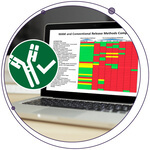
Save Effort. Save Time. Consolidate Your BioTherapeutic Quality, Safety, and Efficacy Assessments with One Direct LC-MS MAM Assay.
In a previous blog, we learned how you could Simplify Your Life with a Streamlined Workflow for Multiple Attribute Methodology (MAM). Based on the well-known technique of peptide mapping, a Liquid Chromatography-Mass Spectrometry-based MAM workflow (LC-MS MAM) enables...
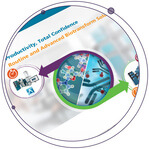
Metabolism and Biotransformation – What Are You Missing?
Are you looking to improve your MetID studies? Want to achieve the productivity and throughput you need to keep your projects moving and have complete confidence that you’re not missing any low level or parent-like metabolites in your sample? In this blog, we’re...
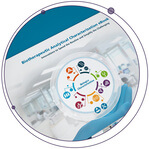
Biologics Characterization: Intact and Subunit Mass Analysis
When All You Need Is Range – Mass Range, Dynamic Range, and the Complete Range Launching the best possible product in the shortest time possible is key for pharmaceutical companies like you. As you know, nearly every process throughout the biologics development cycle...

Now You Can Overcome Your Food and Environmental Testing Obstacles
How do you safeguard human health and protect your reputation through meeting stringent global food and environmental safety standards? When it comes to testing food and environmental samples, the quality of your testing data is vital to your business. You need fast...

Unraveling the Metabolome
Dr. David Wishart, Departments of Biological Sciences and Computing Science, University of AlbertaCanada’s TMIC is an internationally-recognized leader in metabolomics, providing tools and resources that are used by laboratories around the world. The center offers...
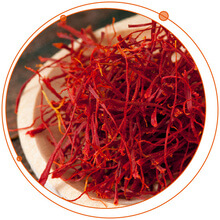
It’s Time to Stop Fraudulent Food Reaching the Consumer with LC-MS/MS
If you are reading this blog, it is likely that you are fully acquainted with food fraud, but let’s just take a moment to set the scene. Food fraud is by no means a new phenomenon and goes as far back as the middle ages, with the concept of tampering or...

Product Quality Assessments of Biotherapeutics Using LC-MS MAM
Why LC-MS MAM?The Liquid Chromatography-Mass Spectrometry Multiple Attribute Methodology (LC-MS MAM) is a technique that is quickly gaining traction in the development and manufacturing of biopharmaceuticals. But what exactly is MAM? As researchers describe in a...
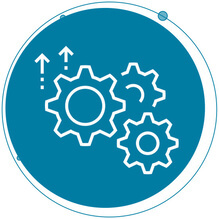
Ion Formation Control Is the Key to Increasing System Robustness
Traditional mass spectrometry ionization methods such as electronic spray ionization (ESI) and matrix-assisted laser desorption ionization (MALDI), are popular methods for detecting the molecular weight of proteins, peptides, and other biologics. The reason being both...